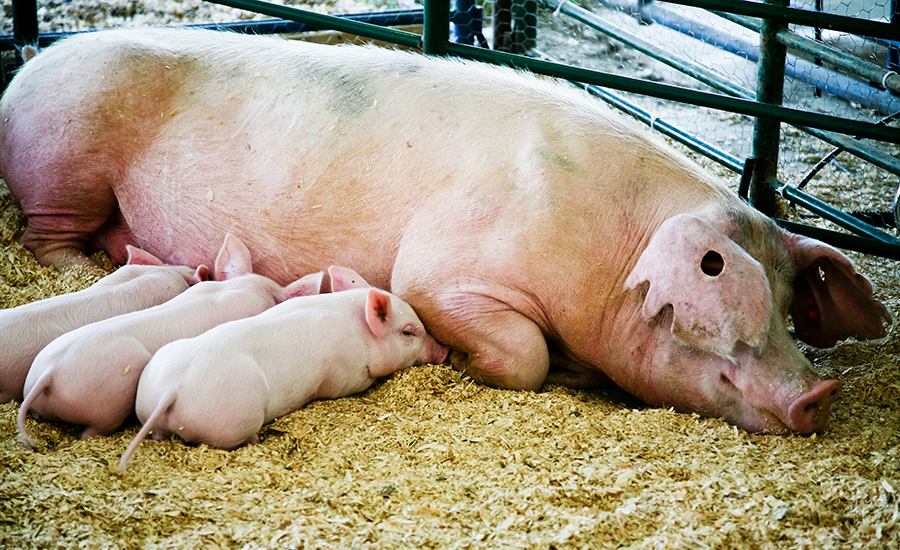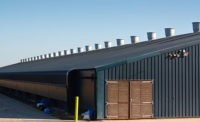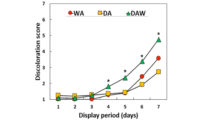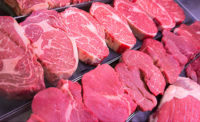(Note: Mariah Nondorf from Purdue University finished in 1st place in the 2020 ICoMST and RMC Master Research Competition in the Muscle Biology/Fresh Meat Quality Master Section in August 2020.)
Postnatal heat stress costs the U.S. livestock industry approximately $2 billion annually (St-Pierre et al., 2003), with about $1 billion attributed to swine specifically (Pollman et al., 2010).
Swine are particularly prone to experiencing heat stress, because they lack functional sweat glands, have a thick layer of subcutaneous fat, and a large body size. Consequently, heat stress has proven to cause reduced animal performance and typically results in smaller, leaner carcasses (Cruzen et al., 2015). But the impact of heat stress may extend beyond what pigs experience postnatally. Gestating sows are even more susceptible to experiencing heat stress because of increased metabolic heat production that occurs as pregnancy progresses. This in utero heat stress may add to the negative economic outcomes of what is normally considered as heat stress.
The known effects of IUHS are negative impacts on growth and performance (Renaudeau et al., 2012; Cruzen et al., 2015; Johnson et al., 2020), including smaller, leaner carcasses, smaller loin muscle area, increased backfat thickness and altered energy metabolism in swine. This may be related to longer-lasting metabolic changes that result from IUHS, especially in early gestation (Cruzen et al., 2015; Johnson et al., 2018). While some studies have found that offspring that have experienced IUHS may exhibit inferior performance, it is largely unknown what effects IUHS may have on meat quality attributes.
To address this, researchers from the Purdue Animal Sciences department in conjunction with the U.S. Department of Agriculture’s Animal Research Service (USDA-ARS) Livestock Behavior Research Unit evaluated the impact of IUHS on the carcass and meat quality attributes of gilts having undergone IUHS. For the study, 24 pregnant gilts were either assigned to a thermoneutral (17.5 ± 2.1 °C; 70.2 ± 8.8% relative humidity) or heat stress (35.8 ± 0.2 °C day and 28.4 ± 0.2 °C night; 80.9 ± 6.0% relative humidity) environmental chamber during the first half of their gestation (from day six after insemination to day 59 of pregnancy). All pregnant gilts were then exposed to thermoneutral conditions from day 60 of their pregnancy through farrowing their litters. After the offspring reached market weight, gilts (n=10/treatment) were selected from the in utero thermoneutral group (IUTN) and IUHS group and were harvested. Carcasses were chilled at 2°C for 24 hours prior to evaluation and collection of the right-side loin muscle. From these, sections were cut and assigned to aging treatments of either no further aging or seven days of wet aging at 2°C in vacuum packaging. From the sections, chops were cut to measure Warner-Bratzler shear force (WBSF), surface meat color, water-holding capacity (WHC), and other chemical attributes such as fatty acid profile, lipid oxidation, and protein denaturation.
In comparing the effect of different in utero environments on carcass composition and quality, the carcasses from the IUHS treatment had lower head and heart weights (P < 0.05) compared with the IUTN group. The IUHS treatment also significantly decreased the loin muscle area (P < 0.001). This may be because of impaired muscle development during fetal development, meaning there are fewer muscle fibers in the muscle (Cruzen, 2015). Additionally, the IUHS treatment increased WBSF values (P < 0.05), indicating the meat may be tougher compared with IUTN counterparts. Other measures including temperature and pH decline, WHC, surface color, fatty acid profile, lipid oxidation, and protein denaturation were not affected by in utero environment (P > 0.05).
These results can suggest that IUHS has a negative impact on some carcass and meat quality traits; however, there appeared to be limited impact on other traits including pH, color, WHC, and antioxidative capacity. Taken together, minimizing IUHS during the first half of gestation could be advantageous to producers to produce higher-yielding carcasses with superior meat quality.
References
Cruzen, S. M., R. L. Boddicker, K. L. Graves, T. P. Johnson, E. K. Arkfeld, L. H. Baumgard, J. W. Ross, T. J. Safranski, M. C. Lucy, and S. M. Lonergan. 2015. Carcass composition of market weight pigs subjected to heat stress in utero and during finishing. J. Anim. Sci. 93:2587-2596.
Johnson, J. S. 2018. Heat stress: impact on livestock well-being and productivity and mitigation strategies to alleviate the negative effects. Anim. Prod. Sci. 58(8):1404-1413.
Johnson, J. S., K. R. Stewart, T. J. Safranski, J. W. Ross, and L. H. Baumgard. 2020. In utero heat stress alters postnatal phenotypes in swine. Theriogenology. 154:110-119.
Pollman, D. S. 2010. Seasonal effects on sow herds: Industry experience and management strategies. J. Anim. Sci. 88:9. (Abstr.).
Renaudeau, D., A. Collin, S. Yahav, V. de Basilio, J.L. Gourdine, and R.J. Collier. 2012. Adaptation to hot climate and strategies to alleviate heat stress in livestock production. Animal. 6(5):707-728.
St-Pierre, N. R., B. Cobanov, and G. Schnitkey. 2003. Economic losses from heat stress by US livestock industries. J. Dairy Sci. 86(Suppl.):E52–E77.






